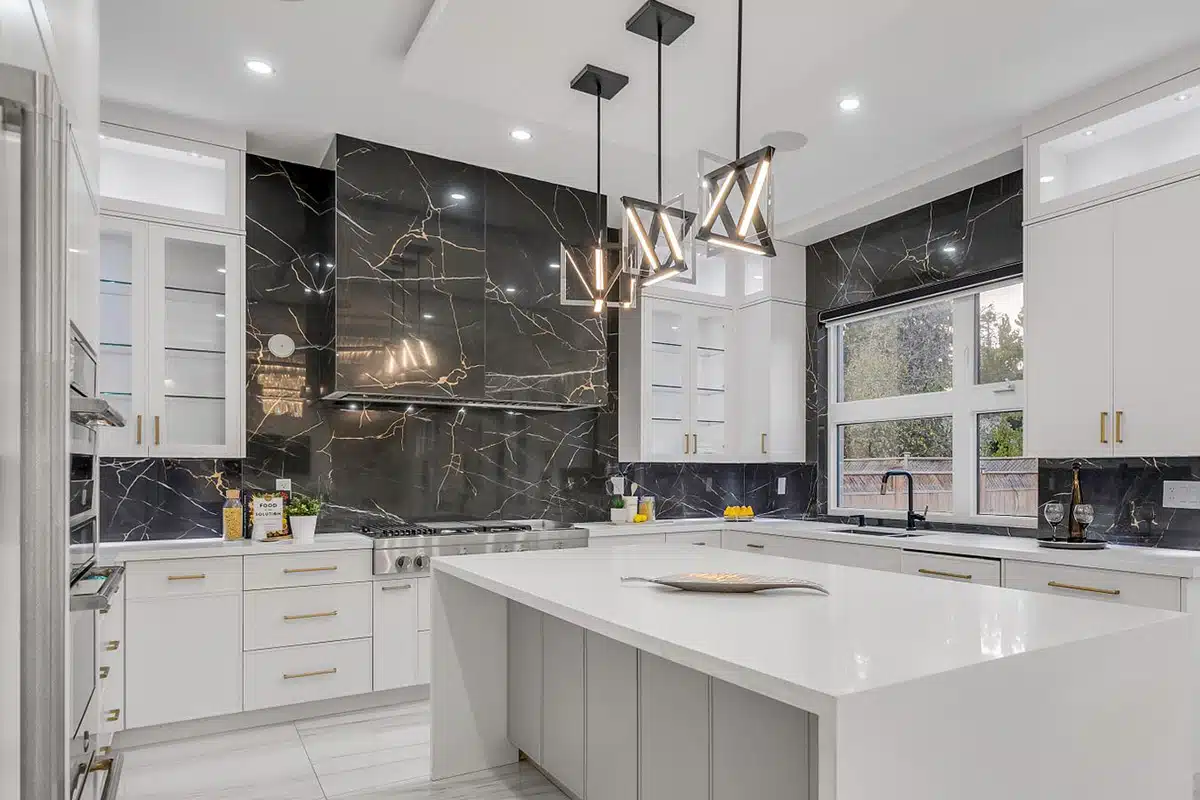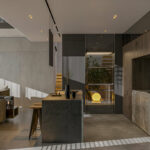Content
- 1 Introduction
- 2 1. Current Kitchen Backsplash Trends and Popular Styles
- 3 2. Material Options and Performance Characteristics
- 4 3. Color Schemes and Design Coordination
- 5 4. Pattern and Layout Design Strategies
- 6 5. Practical Installation and Maintenance Considerations
- 7 6. Budget Planning and Cost-Effective Solutions
- 8 7. Seasonal and Timeless Design Approaches
- 9 8. Professional Installation vs. DIY Considerations
- 10 Conclusion
- 11 Sources/References
Introduction
The kitchen backsplash serves as both a functional necessity and a stunning design focal point that can transform your entire kitchen aesthetic. This essential element protects your walls from cooking splashes while offering unlimited opportunities to express personal style and enhance your kitchen’s visual appeal. Choosing the perfect kitchen backsplash requires balancing practical considerations with design preferences to create a space that’s both beautiful and highly functional.
Modern kitchen backsplash design has evolved far beyond basic white subway tiles, though these classics remain popular for good reason. Today’s homeowners can choose from an incredible array of materials, patterns, colors, and installation techniques that allow for unprecedented personalization. From natural stone and handcrafted ceramics to sleek metals and innovative glass options, the possibilities are virtually limitless.
The right backsplash choice can make a small kitchen feel larger, add warmth to a sterile space, or create dramatic contrast that elevates the entire design. Conversely, poor backsplash selection can overwhelm the space, clash with existing elements, or create maintenance challenges that diminish daily enjoyment of your kitchen.
Understanding current kitchen backsplash trends while focusing on timeless design principles ensures your choice will provide lasting satisfaction and excellent value. This comprehensive guide will explore the latest trends, practical considerations, and expert tips to help you select the perfect backsplash that enhances both your kitchen’s functionality and aesthetic appeal.
1. Current Kitchen Backsplash Trends and Popular Styles
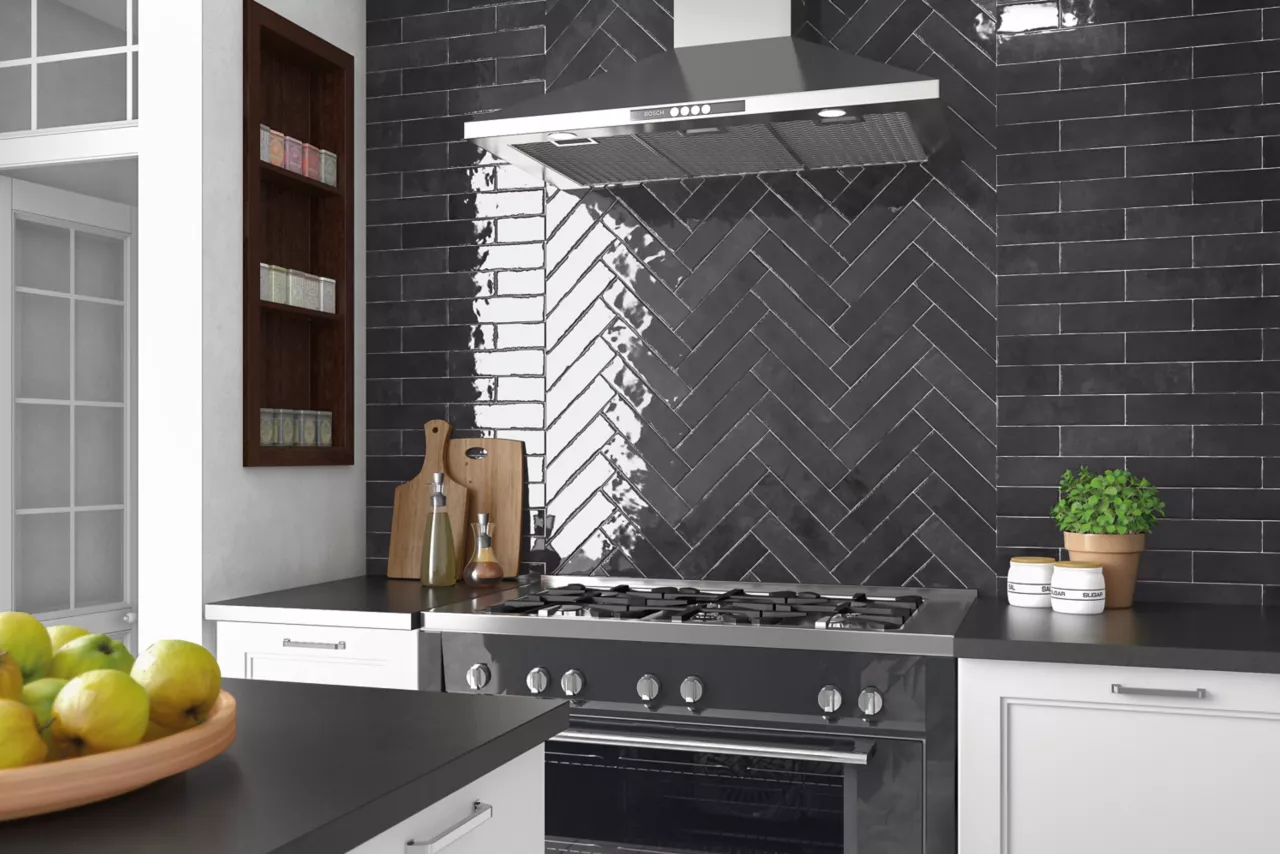
The kitchen backsplash landscape continues evolving with exciting new trends that blend functionality with cutting-edge design aesthetics. Understanding these current movements helps you make choices that feel fresh and contemporary while ensuring your selection won’t quickly become dated. The most successful backsplash trends balance innovation with timeless appeal.
Leading Backsplash Trends:
- Large format tiles for seamless, modern aesthetics
- Natural stone slabs creating luxurious focal points
- Textured surfaces adding depth and visual interest
- Bold geometric patterns for dramatic impact
- Mixed material combinations for unique personalization
Large format kitchen backsplash tiles have gained tremendous popularity for their ability to create clean, uninterrupted surfaces that make spaces feel larger and more sophisticated. These oversized tiles minimize grout lines, reducing maintenance requirements while creating sleek, contemporary aesthetics that work beautifully in modern kitchen designs.
Natural stone backsplashes, particularly marble and quartzite slabs, continue trending upward as homeowners seek luxury materials that provide unique character and timeless beauty. These materials offer unmatched natural variation and can be book-matched for dramatic veining patterns that create stunning focal points.
Textured backsplash surfaces add tactile interest and visual depth that photographs beautifully while hiding minor imperfections and water spots. Options include three-dimensional ceramic tiles, natural stone with varied finishes, and innovative materials that create shadow play and visual movement.
2. Material Options and Performance Characteristics
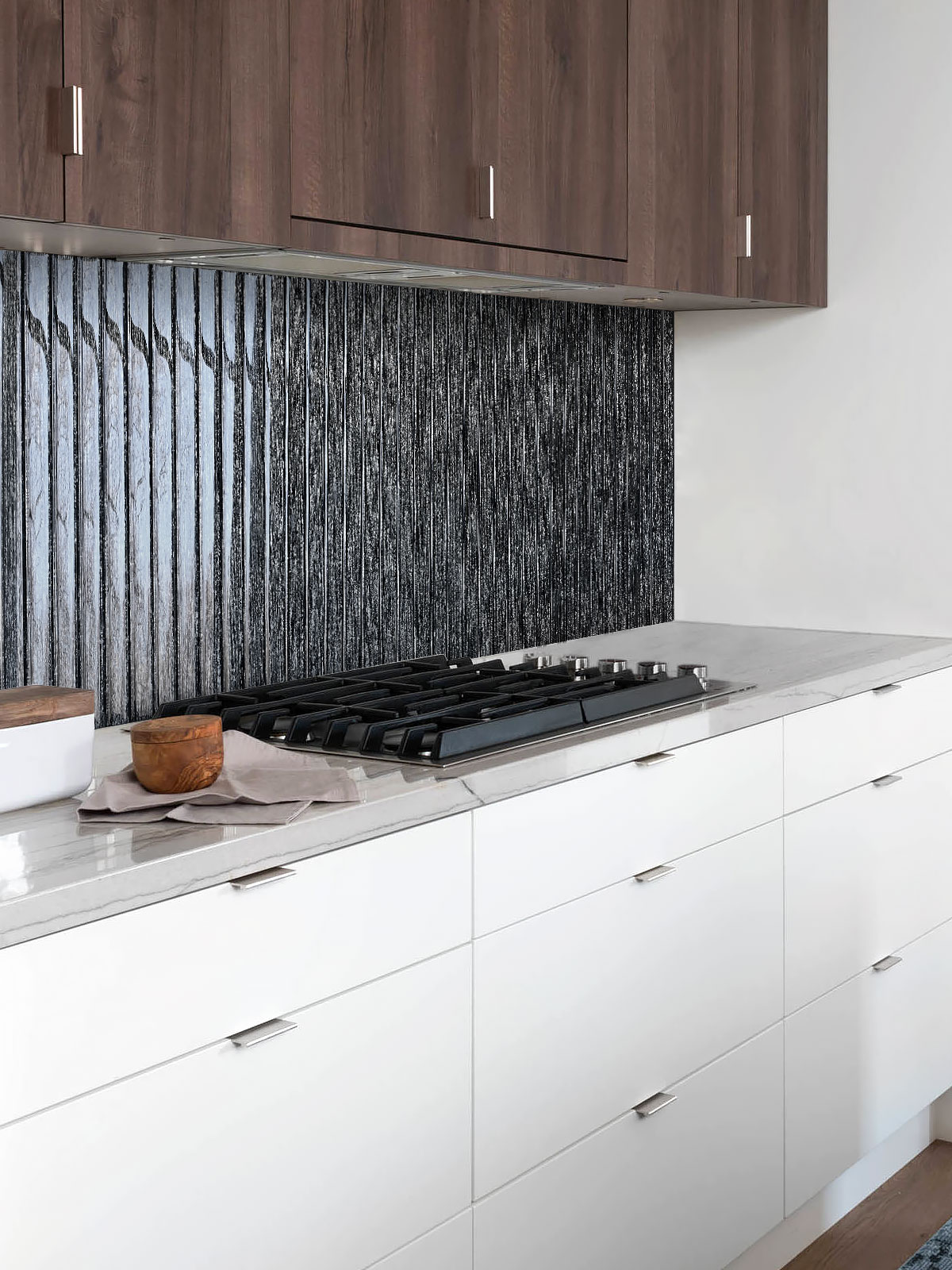
Kitchen backsplash material selection significantly impacts both aesthetic appeal and long-term performance, making it essential to understand the characteristics, benefits, and limitations of different options. Each material offers unique advantages that may align perfectly with your specific needs, cooking habits, and maintenance preferences.
Popular Backsplash Materials:
- Ceramic and porcelain tiles for versatility and durability
- Natural stone for luxury and unique character
- Glass tiles for light reflection and easy cleaning
- Metal surfaces for industrial and contemporary aesthetics
- Brick and exposed materials for rustic charm
Ceramic and porcelain tiles remain the most popular kitchen backsplash materials due to their incredible versatility, durability, and wide range of design options. Modern manufacturing techniques create tiles that convincingly mimic natural materials while offering superior stain resistance, easy maintenance, and consistent quality.
Natural stone backsplashes provide unmatched beauty and character but require more careful consideration of maintenance requirements and sealing needs. Marble offers classic elegance but requires regular sealing and careful cleaning, while granite and quartzite provide greater durability with less maintenance.
Glass backsplash tiles excel at reflecting light, making kitchens feel brighter and more spacious while offering excellent stain resistance and easy cleaning. Available in countless colors, finishes, and sizes, glass tiles can create everything from subtle elegance to bold artistic statements.
Metal backsplashes, including stainless steel, copper, and aluminum, provide contemporary aesthetics and excellent heat resistance. These materials work particularly well behind cooktops and in professional-style kitchens, though they may show water spots and fingerprints more readily than other options.
3. Color Schemes and Design Coordination
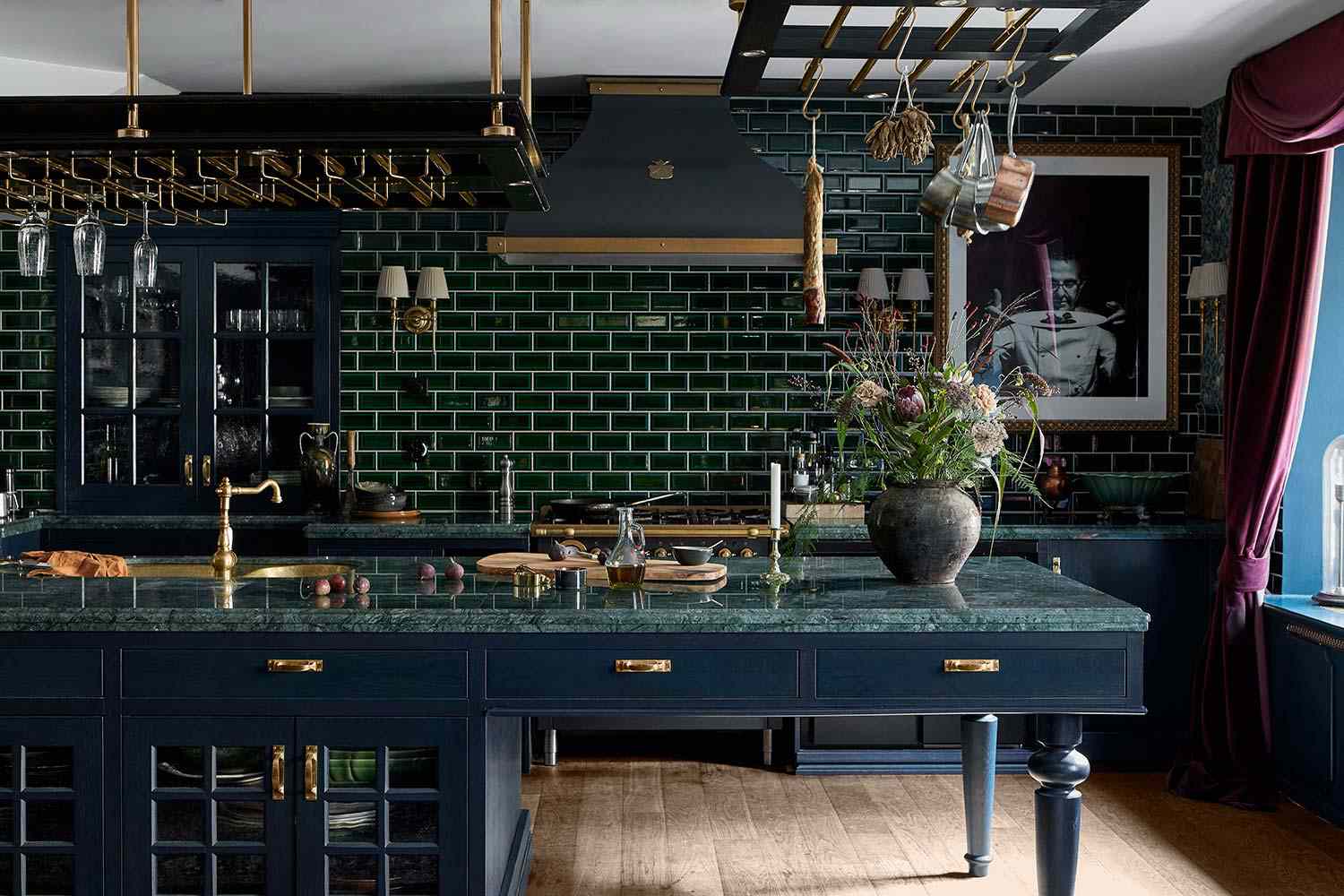
Successful kitchen backsplash color selection requires careful consideration of existing kitchen elements including cabinets, countertops, flooring, and lighting to create cohesive, harmonious designs. The backsplash can serve as a neutral backdrop, bold focal point, or bridging element that ties together various design components.
Color Strategy Approaches:
- Neutral tones for timeless, versatile aesthetics
- Bold colors for dramatic focal points and personality
- Monochromatic schemes for sophisticated elegance
- Complementary colors for dynamic visual interest
- Natural material colors for organic warmth
Neutral kitchen backsplash colors including whites, grays, and beiges provide versatile foundations that work with various cabinet colors and design styles while allowing other elements to shine. These safe choices ensure long-term satisfaction and easier resale appeal, though they may lack personality for some homeowners.
Bold backsplash colors can create stunning focal points and inject personality into kitchen designs, but require careful consideration of long-term appeal and coordination with other elements. Consider using bold colors in smaller doses or areas where changes would be less expensive if preferences evolve.
The relationship between your backsplash and countertop materials deserves special attention, as these large surfaces significantly impact overall visual harmony. Contrasting materials can create dynamic interest, while complementary choices provide sophisticated elegance. Avoid competing patterns or colors that fight for attention.
4. Pattern and Layout Design Strategies
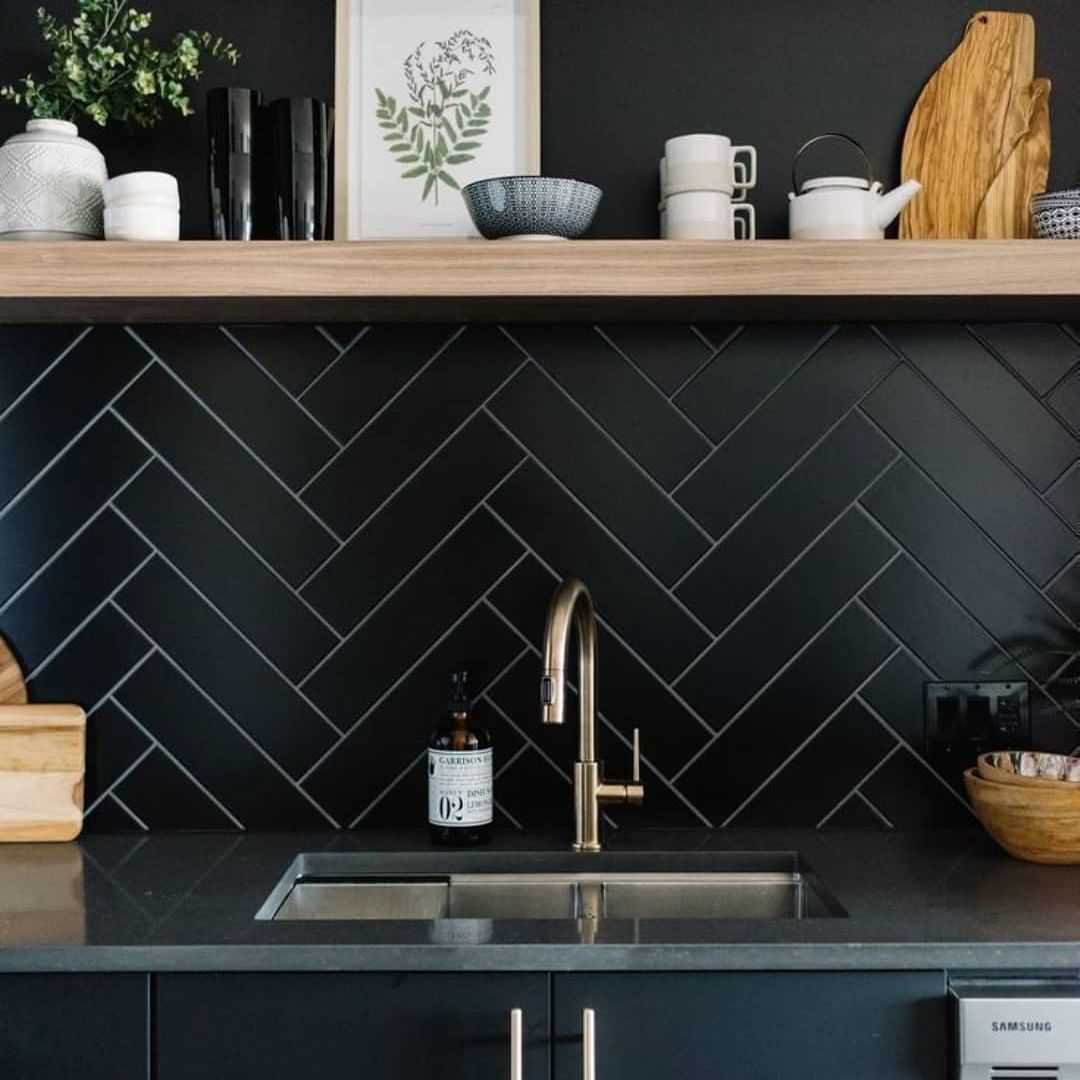
Kitchen backsplash pattern and layout choices dramatically influence the perceived size, style, and visual impact of your space. Understanding how different patterns affect spatial perception and design aesthetics helps you select layouts that enhance your kitchen’s proportions while reflecting your personal style preferences.
Popular Pattern Options:
- Subway tile layouts in various orientations
- Herringbone patterns for classic sophistication
- Vertical installations for height emphasis
- Mosaic designs for intricate detail and texture
- Large format layouts for contemporary minimalism
Traditional subway tile patterns remain popular due to their timeless appeal and versatility, but modern installations often feature creative variations including vertical orientations, colored grout, and oversized formats. These variations maintain classic charm while feeling fresh and contemporary.
Herringbone kitchen backsplash patterns create sophisticated visual interest and work beautifully with both traditional and contemporary design styles. This classic pattern adds movement and elegance while maintaining enough subtlety to avoid overwhelming smaller spaces or competing with other design elements.
Vertical backsplash installations can make ceilings appear higher and create dramatic visual impact, particularly effective in kitchens with lower ceilings or when extending the backsplash to the ceiling. This approach works well with subway tiles, natural stone planks, and large format tiles.
5. Practical Installation and Maintenance Considerations
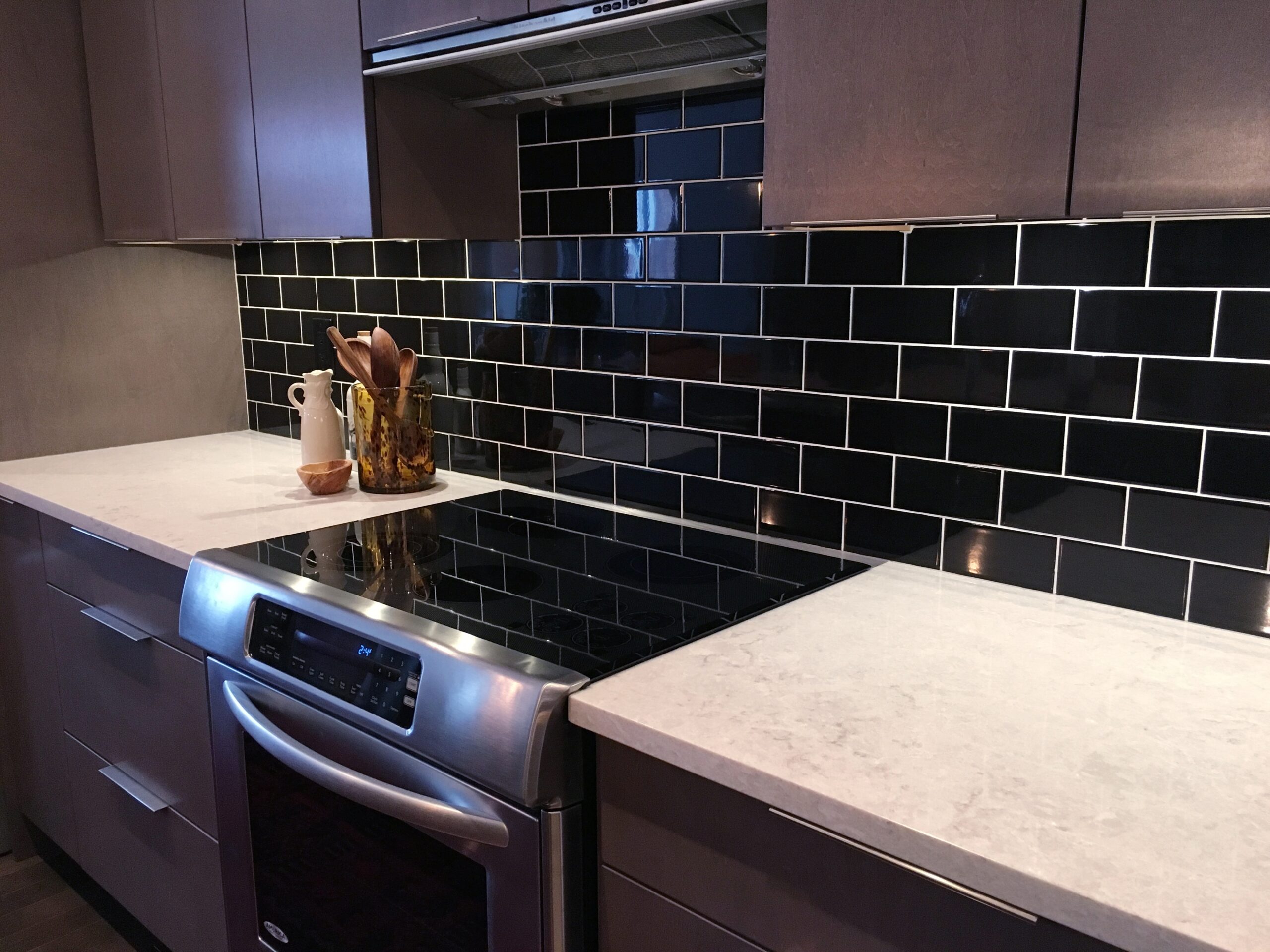
Kitchen backsplash installation requires careful planning, precise execution, and attention to detail to ensure professional results that provide lasting beauty and performance. Understanding installation requirements and maintenance needs helps you make informed decisions about DIY versus professional installation while selecting materials that align with your maintenance preferences.
Installation Considerations:
- Surface preparation and wall condition assessment
- Electrical outlet and switch accommodation
- Proper waterproofing behind sink areas
- Precise cutting around fixtures and appliances
- Professional finishing and sealing requirements
Proper surface preparation forms the foundation of successful backsplash installation, requiring clean, level, and appropriately primed surfaces for optimal adhesion and appearance. Existing wall conditions may require repair or modification before installation can begin, particularly in older homes or areas with previous tile removal.
Kitchen backsplash installation around electrical outlets, switches, and fixtures requires precise measuring and cutting to achieve professional appearance and proper function. Consider upgrading outlets and switches during installation for improved aesthetics and functionality, as access will be limited once the backsplash is complete.
Maintenance requirements vary significantly between different backsplash materials and should influence your selection process based on your cleaning preferences and available time. Natural stone requires periodic sealing, while glass and ceramic tiles need only regular cleaning with appropriate products.
6. Budget Planning and Cost-Effective Solutions
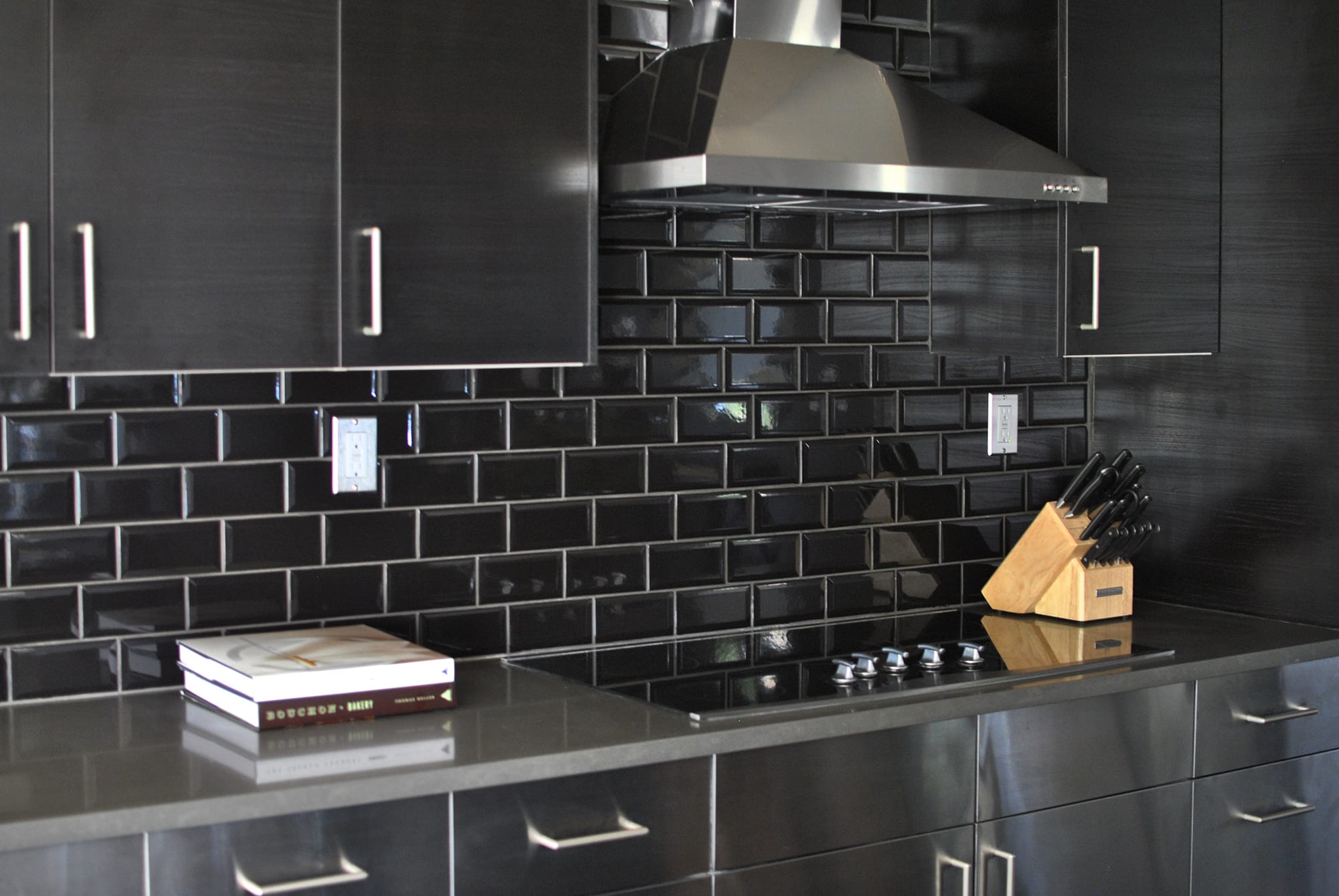
Kitchen backsplash costs vary dramatically based on material choices, installation complexity, and project scope, making budget planning essential for achieving your desired results without financial strain. Understanding cost factors and value-oriented alternatives helps you maximize impact while staying within budget constraints.
Budget Categories and Options:
- Economy options ($3-8 per square foot) including basic ceramics
- Mid-range choices ($8-15 per square foot) with designer tiles
- Premium materials ($15-30+ per square foot) featuring natural stone
- Installation costs typically $5-10 per square foot
- Additional expenses for electrical work and surface preparation
Basic ceramic and porcelain tiles offer excellent value for budget-conscious kitchen backsplash projects, providing durability and attractive appearance at affordable prices. Many economy options now feature sophisticated designs that rival more expensive materials while offering easier maintenance and installation.
Strategic splurging on premium materials in focal areas while using budget-friendly options elsewhere can create high-impact designs without breaking the budget. Consider using expensive natural stone or designer tiles behind the cooktop while installing less expensive options in other areas.
DIY kitchen backsplash installation can significantly reduce project costs for homeowners with appropriate skills and tools. However, complex layouts, electrical work, or premium materials may justify professional installation to ensure optimal results and warranty protection.
7. Seasonal and Timeless Design Approaches
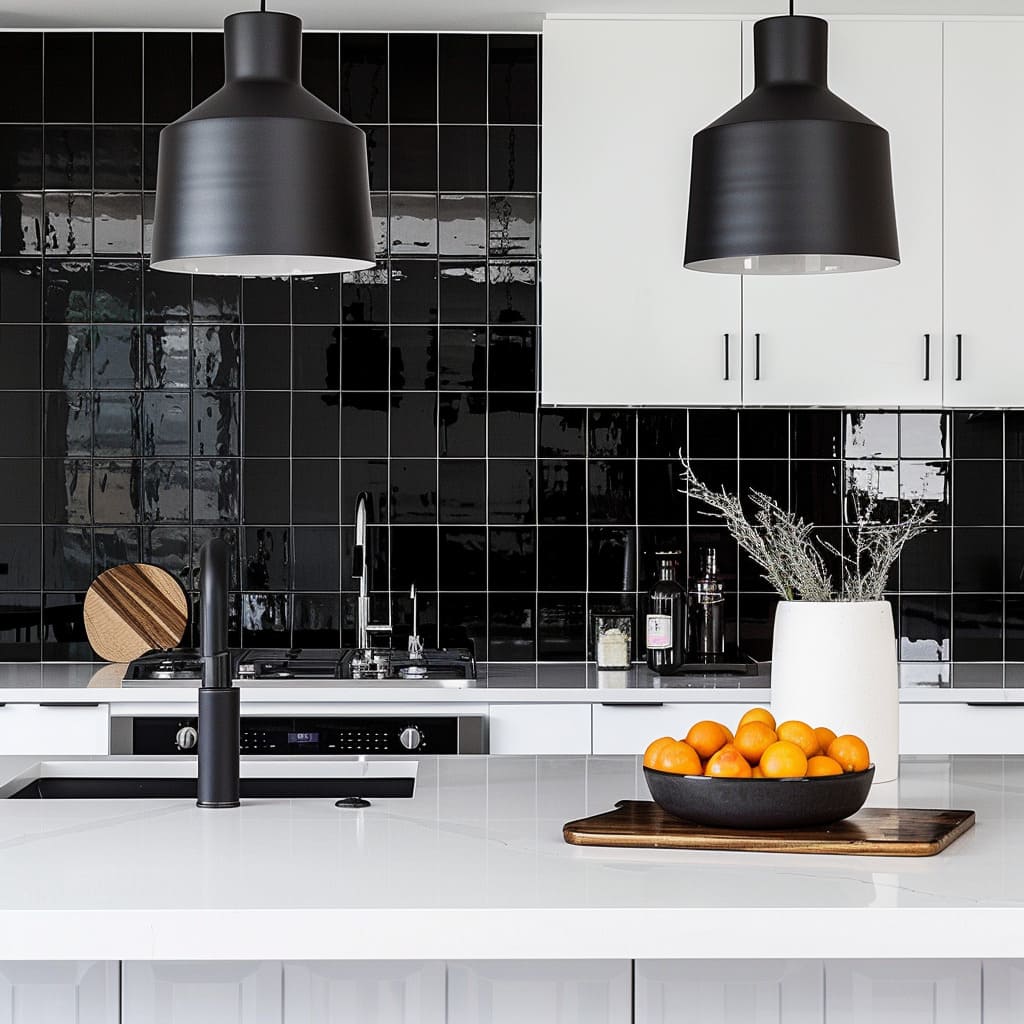
Balancing current kitchen backsplash trends with timeless design principles ensures your selection will provide lasting satisfaction and excellent resale value. Understanding which elements transcend trends while incorporating contemporary touches creates spaces that feel current without becoming quickly dated.
Timeless Design Elements:
- Classic subway tiles in neutral colors
- Natural stone materials with enduring appeal
- Simple geometric patterns that age gracefully
- Quality materials that improve with time
- Proportions that complement architectural styles
Classic white subway tiles represent the ultimate timeless kitchen backsplash choice, working beautifully with various design styles while providing clean, fresh aesthetics that never go out of style. These versatile tiles can be updated with different grout colors, installation patterns, or accent materials as preferences evolve.
Natural materials including marble, travertine, and granite offer timeless beauty that actually improves with age, developing character and patina that enhance their appeal over time. These materials work with both traditional and contemporary designs while providing lasting value.
Incorporating trendy elements through easily changeable accessories, grout colors, or small accent areas allows you to enjoy current styles without committing to expensive materials that may become dated. This approach provides flexibility for future updates without major renovation.
8. Professional Installation vs. DIY Considerations

Deciding between professional installation and DIY kitchen backsplash installation requires honest assessment of your skills, available time, and project complexity. While some backsplash projects suit ambitious DIYers, others require professional expertise to achieve optimal results and avoid costly mistakes.
DIY-Friendly Projects:
- Simple subway tile installations with minimal cuts
- Straight layouts without complex patterns
- Areas without extensive electrical work
- Projects using forgiving materials and standard sizes
- Homeowners with tile installation experience
Professional installation becomes advisable for complex patterns, expensive materials, extensive electrical modifications, or when warranty protection is important. Experienced installers bring specialized tools, problem-solving skills, and efficiency that often justify their cost through superior results and time savings.
Kitchen backsplash installation mistakes can be expensive to correct and may compromise both appearance and performance. Common DIY errors include improper surface preparation, uneven tile spacing, poor cuts around fixtures, and inadequate waterproofing in critical areas.
Consider your timeline, stress tolerance, and opportunity cost when deciding between DIY and professional installation. Professional installation typically completes projects faster with less disruption to your kitchen use, which may provide significant value for busy households.
Conclusion
Choosing the perfect kitchen backsplash requires balancing aesthetic preferences with practical considerations including maintenance requirements, budget constraints, and long-term satisfaction. The most successful selections combine current trends with timeless appeal, creating spaces that feel fresh and contemporary while providing lasting value.
Remember that your kitchen backsplash will be visible and used daily for many years, making quality materials and proper installation worthwhile investments. Focus on materials and designs that align with your lifestyle, cooking habits, and maintenance preferences rather than following trends that may not suit your specific needs.
Take time to view samples in your actual kitchen lighting and alongside your existing materials before making final decisions. Colors, textures, and patterns can appear dramatically different under various lighting conditions and in combination with different elements.
The perfect backsplash enhances your kitchen’s functionality while expressing your personal style and complementing your overall design vision. With careful planning and informed decision-making, your backsplash selection will provide years of satisfaction and serve as a beautiful backdrop for countless meals and memories.
[Resim Önerisi: Mükemmel mutfak backsplash seçimi – fonksiyonel ve estetik açıdan başarılı sonuç]
How high should a kitchen backsplash extend?
Standard kitchen backsplash height is 4 inches above countertops, but many modern designs extend to the bottom of upper cabinets (typically 18-20 inches) or even to the ceiling for dramatic impact. Full-height backsplashes create seamless, sophisticated appearances while providing maximum wall protection. Consider your cabinet configuration and design goals when determining optimal height.
What backsplash works best with white cabinets?
White cabinets pair beautifully with virtually any backsplash color or material, offering maximum design flexibility. Popular choices include gray or colored subway tiles, natural stone, bold patterned tiles for contrast, or matching white tiles with colored grout. The key is balancing your desired level of contrast and visual interest with your overall design aesthetic.
How much does kitchen backsplash installation typically cost?
Kitchen backsplash costs range from $8-40+ per square foot installed, depending on material choices and installation complexity. Basic ceramic tiles with professional installation typically cost $10-20 per square foot, while premium natural stone can exceed $40 per square foot. DIY installation can reduce costs by $5-10 per square foot but requires appropriate skills and tools.
Should kitchen backsplash match countertops or contrast them?
Both matching and contrasting approaches can create beautiful results depending on your design goals. Matching materials create sophisticated, seamless appearances, while contrasting choices add visual interest and personality. Consider the overall kitchen design, other materials present, and your personal preferences. Subtle contrast often provides the most versatile and timeless appeal.
Sources/References
- National Kitchen & Bath Association (NKBA) – Backsplash Design Guidelines https://nkba.org/kitchen-backsplash-design-trends
- Better Homes & Gardens – Kitchen Backsplash Ideas https://www.bhg.com/kitchen/backsplash/kitchen-backsplash-ideas/
- HGTV – Kitchen Backsplash Trends and Tips https://www.hgtv.com/design/rooms/kitchens/kitchen-backsplash-ideas-pictures
- This Old House – Backsplash Installation Guide https://www.thisoldhouse.com/kitchens/21018308/kitchen-backsplash-guide
- Architectural Digest – Kitchen Backsplash Trends https://www.architecturaldigest.com/gallery/kitchen-backsplash-ideas
- Tile Magazine – Backsplash Design and Installation https://www.tilemagazine.com/kitchen-backsplash-trends
- HomeAdvisor – Kitchen Backsplash Cost Guide https://www.homeadvisor.com/cost/kitchens/install-backsplash/
- Kitchen & Bath Design News – Latest Backsplash Trends https://www.kitchenbathdesign.com/backsplash-trends

